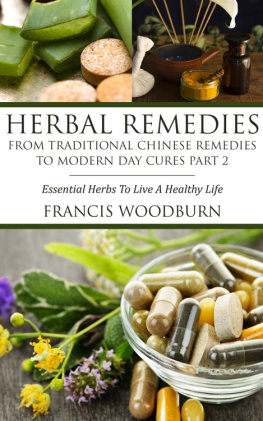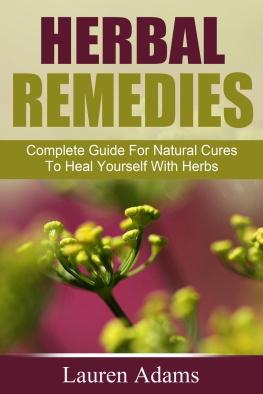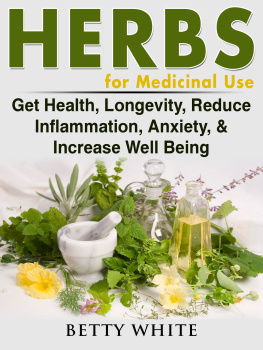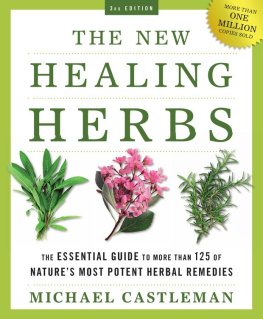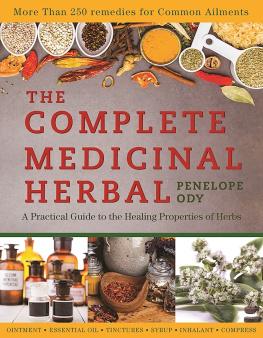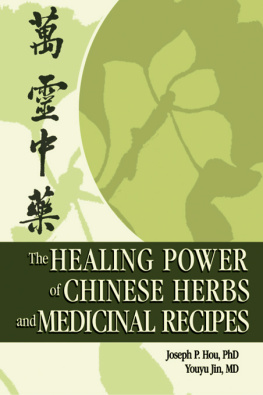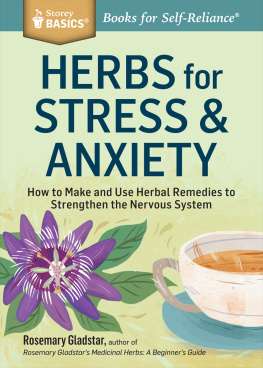Herbal Remedies: From Traditional Chinese Remedies to Modern Day Cures Part 2
Essential Herbs To Live A Healthy Life
By: Francis Woodburn
Table of Contents
Publishers Notes
Disclaimer
This publication is intended to provide helpful and informative material. It is not intended to diagnose, treat, cure, or prevent any health problem or condition, nor is intended to replace the advice of a physician. No action should be taken solely on the contents of this book. Always consult your physician or qualified health-care professional on any matters regarding your health and before adopting any suggestions in this book or drawing inferences from it.
The author and publisher specifically disclaim all responsibility for any liability, loss or risk, personal or otherwise, which is incurred as a consequence, directly or indirectly, from the use or application of any contents of this book.
Any and all product names referenced within this book are the trademarks of their respective owners. None of these owners have sponsored, authorized, endorsed, or approved this book.
Always read all information provided by the manufacturers product labels before using their products. The author and publisher are not responsible for claims made by manufacturers.
Printed in the United States of America
First Printing 2013
Dedication
This book is dedicated to those who have made the transition to herbal remedies.
Chapter 1- Preventative Medicine: Good Herbal Tonics for Health and Well-Being
Many of us dont think too much about our health until we become ill. Sickness has a way of demanding our attention every moment that its around, while good health is easy to take for granted. Thats why preventative measures are so often overlooked, even though they are a crucial part of a healthy lifestyle. Most diseases are, indeed, easier to prevent than they are to cure. And the steps we take to strengthen our bodys natural resistance and protect it from illness dont need to involve expensive pharmaceuticals or trips to the doctor. Many good herbal tonics can be made from plants that grow in your region, or which can easily be found in herbalist shops.

Garlic is a fiery overall body tonic that, unfortunately, loses its potency when its exposed to air and particularly, when its cooked. But a couple of cloves, if you can endure chewing them raw, will purify your blood and clean your stomach and the rest of your digestive system. Garlic rubbed on a cut will act as an antiseptic. It does much the same thing inside your body, as well, killing off harmful bacteria while at the same time stimulating your immune system. Another herb with blood-purifying and immune system-enhancing properties is stinging nettle. Collect its shoots in early spring and drink three cups of nettle tea a day for a month to rejuvenate your body. As with most herbal teas, this should be sipped slowly for best effect.
The onset of the flu season in late autumn, when the cold, wet weather sets in is an ideal time to take some natural preventative medicine. Some herbs that will invigorate your body, and offer it protection, include dandelion root, wild strawberry leaves, elderberry blossoms, chamomile, linden leaves, and meadowsweet. All these ingredients can be mixed together for a strong tonic to be drunk slowly throughout the day. Herbs that are going to be used medicinally should be taken fresh whenever possible. Dried herbs can be used in teas for as long as a year, however.
Drinking a cup of thyme tea in the morning will energize you in a way thats gentler on your stomach than coffee or black tea is. Dandelion stems are also a good natural stimulant. Pick them during the spring when theyre in flower and at their highest potency. Then treat your body to a two-week regimen, eating ten fresh-picked and washed stems every day for a natural boost.
Many people drink tea made with St. Johns Wort for the soothing effect that it has on their state of mind. St. Johns Wort has long been a reputed combatant of depression and anxiety. Drink the tea slowly two cups over the course of the day. Kava, an herb native to Hawaii and its surrounding islands, is also revered for its powers to bestow a sunnier disposition upon those who drink teas made from its root, either powdered or whole. Another herb thats a respected aid to mental and emotional well-being is hawthorn. Taken either as a tea (two cups throughout the day) or as a tincture (four to ten drops), hawthorn can soothe overall anxiety. The same can be said for mistletoe tea.
Chapter 2- Heart Disease & How to Prevent It
Heart disease is a broad expression. It includes various kinds of heart problems. Heart disease is the leading cause of death in the United States. The main cause of heart disease is atherosclerosis, which is also known as hardening of the arteries. Factors such as high cholesterol, hypertension, smoking, obesity, bad diet, genetic abnormalities, infections, toxins and diseased organs can cause or contribute to the onset of atherosclerosis. Heart disease can lead to major disabilities and cause organ damage. Heart disease can also result in death due to heart failure or a heart attack.
There are four principal types of heart disease. Arrhythmia is a heart condition that involves abnormal heart rhythms. Valvular diseases impact on of the four main valves that pump blood into or out of the heart muscle. Cardiomyopathy is a disease of the actual heart muscle. Congestive heart failure describes a condition whereby the heart cannot pump blood to the organs and tissues of the body efficiently.
Symptoms
What are the warning signs to watch out for when it comes to heart disease? You should consult your physician immediately if you experience symptoms such as chest pain, weakness, fatigue, and dizziness, shortness of breath, a racing or fluttering heartbeat, water retention in the lower extremities, or trouble breathing when you are lying down.
Your Diet
If you want to avoid developing heart disease, the first thing you should do is modify your diet. Eating a healthy diet that includes many whole foods is imperative if you want to avoid or reverse heart disease. Try to avoid foods that contain a lot of unhealthy fats or sugars. Instead, eat more fruits and vegetables. It is important to eat at least five portions of fruit and vegetables on a daily basis. You should also fill up on foods that contain good HDL cholesterol. Examples of foods that contain healthy fat include mackerel, trout, cod, tuna, avocados, nuts and olive oil. Certain beverages may also lower your risk for heart disease. For example, green tea has beneficial antioxidants, as does red wine.
Regular Exercise
Keeping your heart healthy is about more than just diet. If you want to avoid heart disease, regular cardiovascular exercise is most important. You should try to do at least thirty minutes of aerobic exercise three or four times per week. You may also find it useful to keep yourself physically active by walking instead of driving, weeding your garden or doing chores about the house. Do whatever it takes to avoid leading a sedentary lifestyle and keep your heart pumping.
Relaxation
If you want your heart to stay healthy, you should lead an active lifestyle. However, you still need to find some time to relax and do the things that make you feel content. Stress can cause high blood pressure. High blood pressure can lead to atherosclerosis. Atherosclerosis is a chief cause of heart disease. Do what you can to avoid feeling stressed out, and try not to succumb to negative emotions like anger, fretfulness, fear and irritation.
Next page
